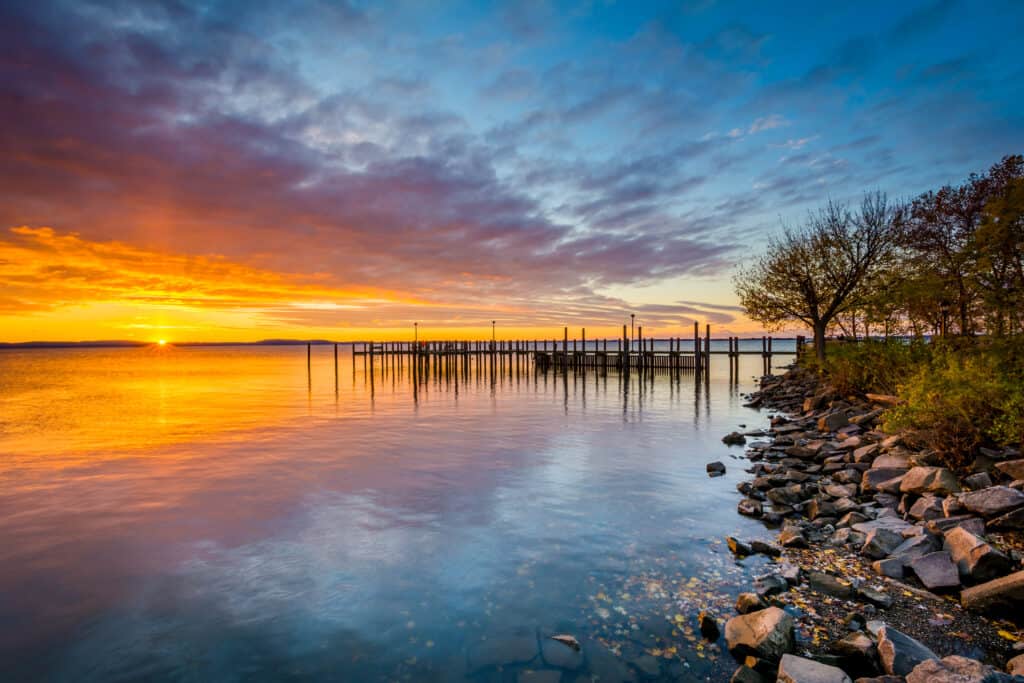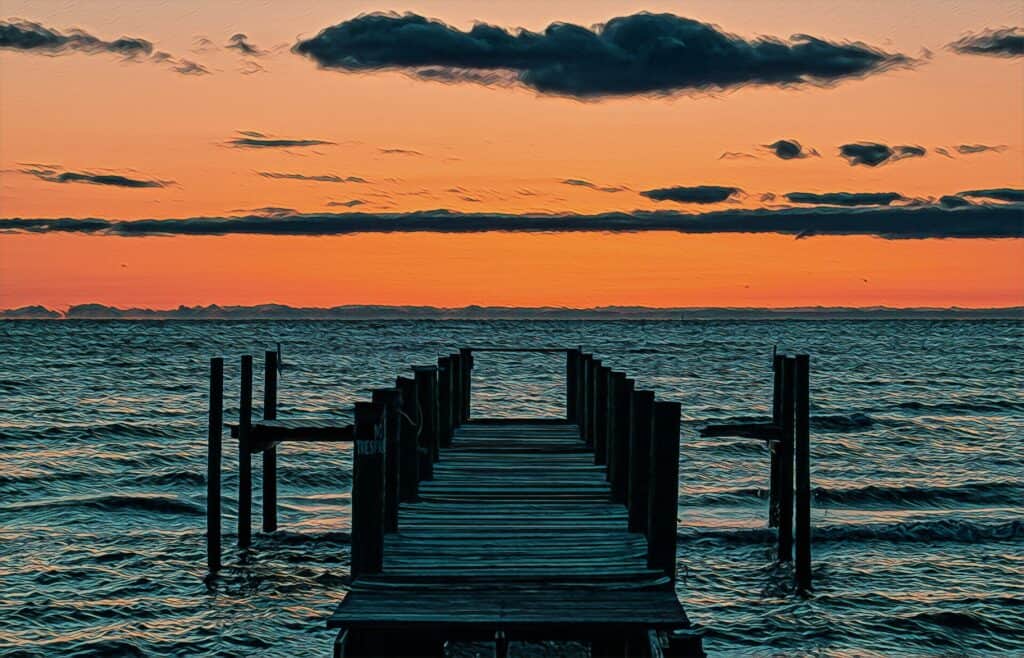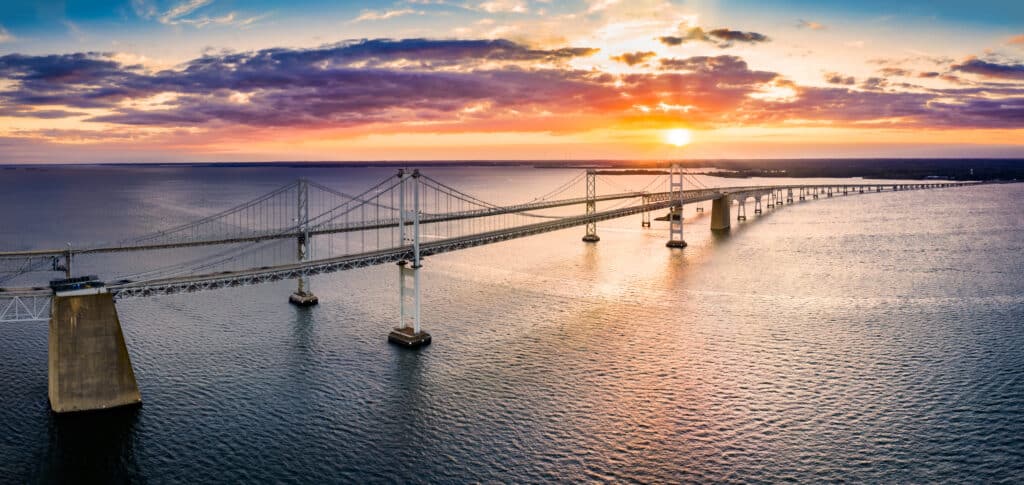The Chesapeake Bay is a unique waterside considered the most beautiful and the largest estuary in the United States, leading to numerous waterways, canals, lakes, and rivers. It has amazing scenery and rich cultural and historical significance. Around it are several parks and recreational areas for hiking, horseback riding, mountain biking, and many more. Although it is widely accepted as the largest estuary in the United States, many people are still curious to know how deep the Chesapeake Bay is. If you’re one of those people, this article gives you answers. Let’s go!
Where is Chesapeake Bay Located?

The Chesapeake Bay is located in the Mid-Atlantic region and is separated by the Delmarva Peninsula from the Atlantic Ocean. The Bay’s entrance is between Cape Charles and Cape Henry at the south end, its southern portion is in Virginia, and the northern part is in Maryland. The Chesapeake Bay extends into six American states in the north, east, and west: Pennsylvania, New York, Delaware, Virginia, West Virginia, and Maryland. Furthermore, it extends into the federal capital city of Washington in the District of Columbia.
How Deep is the Chesapeake Bay?

The Chesapeake Bay has an average depth of 21ft (6.4m) with a maximum depth of 174 feet (53m). A region called “The Hole” is considered the deepest part of the lake and is about 174 feet deep. This spot is located near the southeast of Annapolis, near Bloody Point. The huge bay is approximately 329 km (200 miles) long and has a maximum width of 48 km (30 miles).
Furthermore, Chesapeake Bay is a vast water source with a drainage basin of about 64,299 square miles (166 534km²). It has a surface area of 4,479 square miles and over 150 streams and rivers. Its tributaries include Rivers Choptank, Pocomoke, Wicomico, James, York, Rappahannock, Potomac, Patuxent, Chester, and Susquehanna. However, the primary inflow of water to the Chesapeake Bay is the Susquehanna river east of Havre de Grace, Maryland, with the direct outflow also being the Atlantic Ocean situated north of Virginia Beach, Virginia.
Are there Animals in Chesapeake Bay?
Yes, there are numerous animals in the Chesapeake Bay. Some of these animals migrate at specific times of the year, but others are permanent inhabitants of Chesapeake Bay. The Bay is home to several fish, crabs, and shellfish species. Some other animals found here include the American eel, Atlantic menhaden, horseshoe crab, striped bass, blue crab, and the American oyster.
Aside from these, there are seasonal animals like the bottlenose dolphins. Stingrays, various sharks, loggerhead sea turtles, and large fishes also visit the Chesapeake Bay sometimes. Most large fishes spotted are bull sharks, scalloped hammerhead sharks, basking sharks, and tiger sharks. There are also sightings of Manatees in the Bay and its tributaries, usually around seagrasses they can eat. Also, the Chesapeake Bay is inhabited by birds such as the piping plover, great blue herons, bald eagles, osprey, and peregrine falcons.
Plants in the Chesapeake Bay
Aside from being a habitat for so many animals, Chesapeake Bay also has a lot of plants growing around it. It favors land and aquatic flora, including some submerged aquatic plants such as eelgrass and widgeon grass. Wild Rice, Red Maple, Loblolly Pine, Phragmites, Bald Cypress, and Brazilian waterweed are other plants that grow around the Chesapeake Bay.
Can You Swim in Chesapeake Bay?

Swimming at the Chesapeake depends on what part of the Bay you are in. There are so many tributaries and beaches along the Bay, and water quality can change quickly. Beaches along the rivers are considered safe for fishing, boating, and swimming. However, it is good to note that this water is enormous, and the bacteria levels constantly fluctuate. Also, the Chesapeake Bay was once considered a dead zone because of the large number of aquatic lives that died due to the toxicity of the water.
The most important tip is not to get into the water during or after rainfall, as there would be a runoff of nutrients and bacteria in the water. It’s best to wait for 48 hours after a downpour before going to swim at the Bay. Also, check the water update at the park or beach you will be visiting. Make sure you do not have any open cuts while going into the water and be mindful of the amount of time spent in the water. Lastly, make sure to wash off properly after a swim.
Is the Chesapeake Bay Good for Tourists?
As we’ve established earlier, the Chesapeake Bay is the largest estuary in the United States. It is an excellent place for tourists to enjoy a memorable holiday experience – incredible views and scenery are abundant. You can also enjoy many activities at the Chesapeake Bay, such as fishing, kayaking, sailing, crabbing, boating, and swimming.
The Bay is also well known for its seafood. So if you’re a food enthusiast, prepare to taste some of the rarest fish and seafood here. Locals make many unique cuisines with their fish: terrapins, smoked hams, blue crabs, shellfish, waterfowl, and many others. The Chesapeake Bay oyster especially has an unforgettable taste and texture that you’d love.
Up Next:
Discover The Five Most Common Sharks Found In The Chesapeake Bay!
What’s The Largest Bay In The World?
River vs. Bayou: What’s The Difference?
The post How Deep is Chesapeake Bay? appeared first on AZ Animals.
from Animal News, Facts, Rankings, and More! - AZ Animals https://ift.tt/BlNIE0V